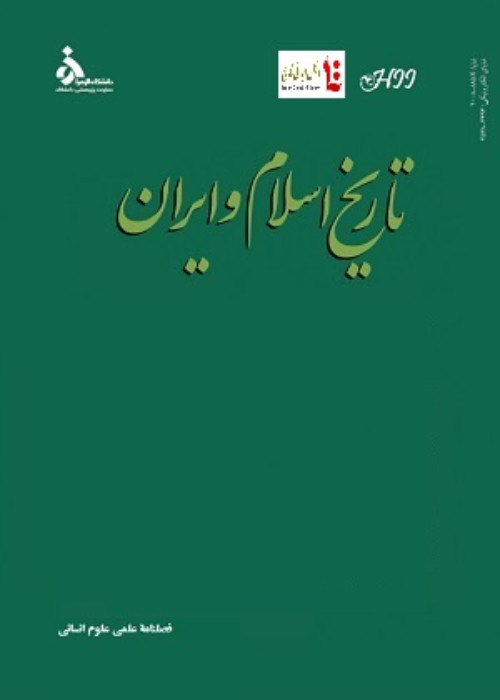The Situation of Women in the Sāssānīān Social System in the Post-Mazdak Era and Its Impact on the Writing of the Ardāvīrāfnāme
Author(s):
Article Type:
Research/Original Article (دارای رتبه معتبر)
Abstract:
According to the content of jurisprudential and legal books compiled during the Sāssānīān period and according to scholars of this field, gender is one of the basis and criteria that make a difference between the legal status of individuals in society, as the duties and rights of women in social structures and institutions in accordance with legal laws, show the inferior position of women to men. This superiority of men over women in the content of some texts of this period, such as the text of Ardāvīrāfnāme, belonging to the sixth century AD and the reign of Ḵosrow Anūšīrvān (539-579 AD), is quite evident. Most of the content of this prophetic text refers to the description of the hellish punishments of women who have failed or committed sins in the field of family and marital relations. On the other hand, we know that Mazdak had a special and, of course, deconstructive view of women. The official sources of the Sassanid’s have negatively assessed Mazdak's slogans and goals about women. But following Mazdak's special approach to women in society, under the slogan of equality for all, women were granted freedoms that resulted in norm-breaking behavior by people, generally in the lower classes of society, which ultimately led to disorder and corruption. In this article, an attempt is made based on Avestan, Pahlavi, Persian, and Arabic sources in the heart of the Iranian social system, to introduce the production of the text of Ardavirafnameh as a corrective reaction by religious men and government officials against the irregularities and corruption caused by the dissemination of Mazdaki teachings in the Iranian society. It was understood that the production of this text was a corrective and purposeful action in the direction of Ḵosrow Anūšīrvān's social reforms to restore order in the society after Mazdak’s uprising.
Keywords:
Language:
Persian
Published:
History of Islam and Iran, Volume:31 Issue: 51, 2021
Pages:
73 to 95
magiran.com/p2345816
دانلود و مطالعه متن این مقاله با یکی از روشهای زیر امکان پذیر است:
اشتراک شخصی
با عضویت و پرداخت آنلاین حق اشتراک یکساله به مبلغ 1,390,000ريال میتوانید 70 عنوان مطلب دانلود کنید!
اشتراک سازمانی
به کتابخانه دانشگاه یا محل کار خود پیشنهاد کنید تا اشتراک سازمانی این پایگاه را برای دسترسی نامحدود همه کاربران به متن مطالب تهیه نمایند!
توجه!
- حق عضویت دریافتی صرف حمایت از نشریات عضو و نگهداری، تکمیل و توسعه مگیران میشود.
- پرداخت حق اشتراک و دانلود مقالات اجازه بازنشر آن در سایر رسانههای چاپی و دیجیتال را به کاربر نمیدهد.
In order to view content subscription is required
Personal subscription
Subscribe magiran.com for 70 € euros via PayPal and download 70 articles during a year.
Organization subscription
Please contact us to subscribe your university or library for unlimited access!


